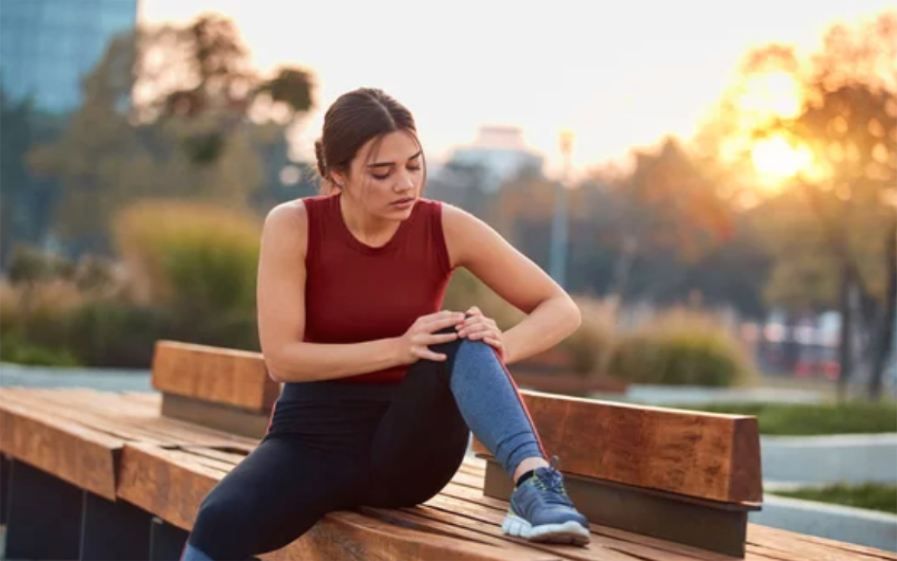WHAT WE TREAT
Ligament Sprains
Best Physiotherapist in Delhi
Ligament sprains can be painful and limit your mobility. Learn about their causes, symptoms, treatment options, and how to prevent them.
Causes, Symptoms, Treatment, and Prevention
Ligaments are tough, fibrous tissues that connect bones to one another, providing stability to your joints. While they’re incredibly resilient, they can still be susceptible to injury. Ligament sprains, characterized by overstretching or tearing of these ligaments, are common and can occur in various parts of the body, we’ll explore the causes, symptoms, treatment options, and preventive measures related to ligament sprains.
Causes of Ligament Sprains
Ligament sprains can happen due to various reasons:
- Sports Injuries: High-impact sports or sudden changes in direction can strain or tear ligaments.
- Accidents: Falling, tripping, or being involved in a car accident can result in ligament sprains.
- Overuse: Repeated stress on a joint from activities like running can lead to ligament injuries.
- Weak Muscles: Weak muscles can’t adequately support the joints, increasing the risk of sprains.
- Improper Footwear: Ill-fitting or unsupportive footwear can strain the ligaments, especially in the ankle.

Symptoms of Ligament Sprains
The symptoms of a ligament sprain can vary depending on its severity:
- Mild Sprain:
- Slight pain and swelling.
- Minimal to no joint instability.
- Little to no bruising.
- Moderate Sprain:
- Moderate pain and swelling.
- Reduced joint function.
- Possible mild bruising.
- Severe Sprain:
- Severe pain and immediate swelling.
- Significant joint instability.
- Noticeable bruising.
Treatment for Ligament Sprains
Treatment for ligament sprains depends on the severity of the injury:
- I.C.E Protocol:
- Rest: Avoid activities that strain the injured ligament.
- Ice: Apply ice to reduce pain and swelling.
- Compression: Use a compression bandage to support the affected area.
- Elevation: Elevate the injured limb to reduce swelling.
- Pain Medications:
- Over-the-counter pain relievers can help manage pain and inflammation.
- Physical Therapy:
- Physical therapy exercises can strengthen the muscles around the injured ligament, promoting healing.
- Bracing or Taping:
- A brace or tape can provide support to the injured joint.
- Corticosteroid Injections:
- In severe cases, your doctor may recommend corticosteroid injections to reduce inflammation.
- Surgery:
- Severe ligament injuries may require surgical intervention to repair or reconstruct the damaged ligament.
Preventing Ligament Sprains
Preventing ligament sprains involves several key measures:
- Strength and Flexibility: Regularly engage in exercises that strengthen muscles and improve joint flexibility.
- Proper Footwear: Wear appropriate shoes for your chosen activity.
- Technique: Use proper techniques and form during physical activities.
- Warm-Up and Cool Down: Always warm up before exercise and cool down afterward.
- Safety Gear: Use appropriate protective gear, such as helmets, pads, or braces.
- Terrain Awareness: Be aware of your surroundings to prevent tripping and falling.


Cutting-Edge Technology
Our commitment to using the best technology extends to various aspects of physiotherapy:
- Robotic Assistance: We employ robotics for gait training, aiding patients with mobility impairments. These devices facilitate improved motor control and muscle activation.
- Electrotherapy: Techniques like TENS, IFT, and Ultrasound Therapy are used to target pain relief and accelerate tissue healing.
- Virtual Reality (VR): We utilize VR and interactive gaming for engaging and enjoyable rehabilitation, increasing patient motivation and compliance with treatment.
Frequently Asked Questions
Reach out to us if you have further Questions - We're here to help!
Q1: How long does it take for a ligament sprain to heal?
- The time it takes to heal depends on the severity of the sprain. Mild sprains may heal in a few weeks, while severe sprains can take several months.
Q2: Can I treat a ligament sprain at home, or should I see a doctor?
- Mild sprains can often be treated at home using the R.I.C.E protocol. However, if you suspect a severe sprain or if symptoms persist, it’s essential to consult a doctor.
Q3: Can ligament sprains lead to chronic pain or long-term complications?
- While many ligament sprains heal completely, some severe injuries may result in chronic pain or long-term joint instability.
Q4: Are there specific exercises to prevent ligament sprains?
- Strengthening exercises, such as resistance training and balance exercises, can help prevent ligament sprains by improving muscle support around the joints.
Q5: Can ligament sprains be completely avoided?
- While it may not be possible to completely avoid ligament sprains, following safety guidelines and using proper techniques can significantly reduce the risk.
Ligament sprains can be painful and affect your mobility, but with the right treatment and preventive measures, they can be managed effectively. Whether you’re an athlete or simply staying active, understanding the causes, symptoms, treatment options, and prevention strategies related to ligament sprains is crucial for maintaining your joint health and overall well-being.
Have Questions or Need Assistance?
Don’t hesitate to reach out to us:
Book Appointment with Experts
- Call/WhatsApp: +9818911195
- Book Appointment with Experts
We are here to lend our support on your journey toward improved movement and overall well-being.
See all Blogs & Articles
See all Conditions we Treat
Note: Content provided here is for informational purposes only and is not a substitute for professional medical advice or diagnosis. If you believe you are experiencing pain or any other health-related issue, it is important to seek the advice of qualified healthcare professionals for a proper evaluation and treatment plan.
See all How it Works.









